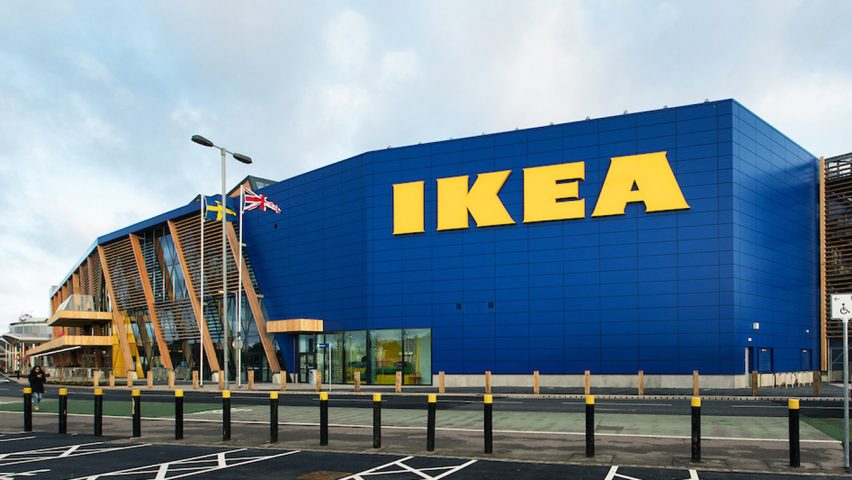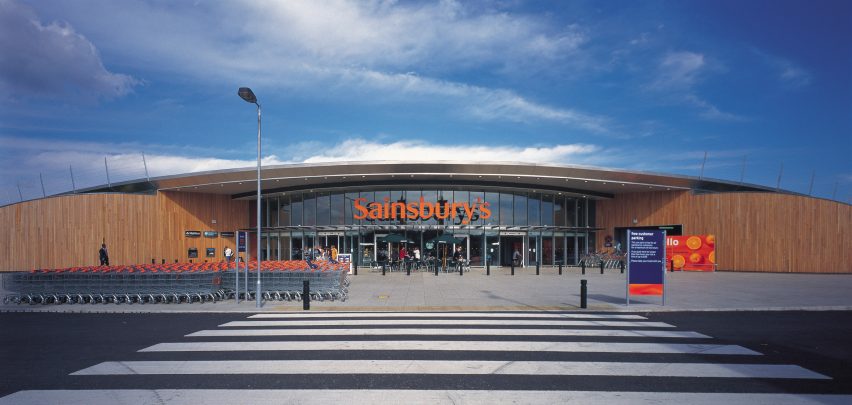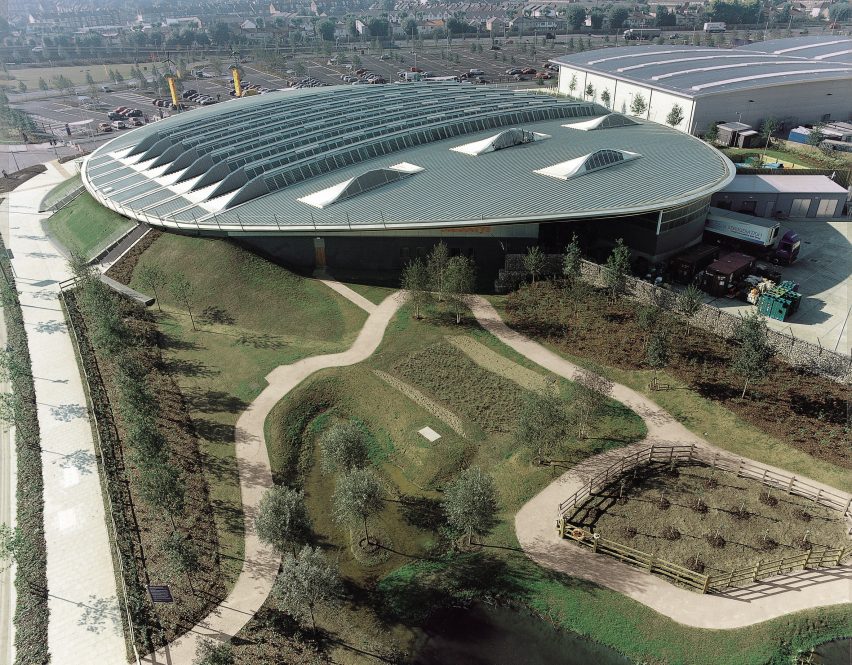
"There's something seriously wrong with IKEA's most sustainable store"
IKEA claims its latest London store is its greenest ever. But how can this be true if another green building was demolished to make way for it? asks Tom Ravenscroft.
Knocking down one sustainable building to build another is nonsensical. Still, this is exactly what has happened in Greenwich, London, where IKEA has just opened its latest retail outlet.
"IKEA Greenwich is our most sustainable store," reads the furniture company's website and the building sure is packed with sustainable features. But there's something seriously wrong. The white elephant in the room is that to build the store, IKEA demolished what was the UK's most sustainable supermarket.
Designed by London-based architectural practice Chetwoods, Sainsbury's Greenwich was lauded as a pioneering example of sustainable commercial architecture that pushed the boundaries of eco-friendly design at the end of the 20th century. It was the first supermarket to achieve an excellent BREEAM sustainability rating, with its green credentials earning it a place on the Stirling Prize shortlist – unsurprisingly the first and only supermarket ever to make the list.
However, only 17 years after celebrity chef Jamie Oliver opened the doors, it was demolished. In an instant not only was the building wiped away, but with it the idea that it was sustainable. As Laurie Chetwood told me: "Knocking it down knocks out the idea that it was a sustainable building. It makes a mockery of it all."
IKEA has clearly put every effort into creating a environmentally friendly store
As a rule of thumb, the energy needed to construct and demolish a building is around 30 per cent of what's needed to run it over a 50-year lifespan. By demolishing the building much earlier than this, any environmental savings banked while running the building were wiped out. No matter how little energy the Sainsbury's building took to operate, in Greenwich a standard steel box that stood for 50 years would have been the more sustainable option.
IKEA has clearly put every effort into creating a environmentally-friendly store. Designed by SRA Architects, the building looks on the face of it like you'd expect an IKEA to look. But behind its familiar blue face, it incorporates numerous green technologies: rainwater harvesting will contribute half the water used in the building, its circulation areas are naturally lit and LED lighting has been installed throughout.

The store's sustainability agenda is most visible from the air. The roof is covered with 12,000-square-metres of solar panels, broken only by rooflights, and a 4,000-square-metre green roof – one of the largest in London.
However, even if it achieves the highest BREEAM rating as is expected, what has come before means IKEA's 'most sustainable store' can hardly be considered sustainable.
The store could have been repurposed by another retailer, or converted for another use
Sainsbury's made the decision to leave the site as the building was no longer big enough for its needs and has instead built a new, larger store just down the road. According to the chain, the decision to close any store is "never taken lightly". It claims relocating has allowed it "to operate in an even more environmentally-friendly way".
The store could have been repurposed by another retailer, or converted for another use. But IKEA decided that, although the site was ideal for its first new London store in 14 years, the building was not.
"There must have been an alternative – it should have been retained and used by another retailer, or become a community centre or it could have made a good sports centre," said Catherine Croft, director of the Twentieth Century Society, which campaigned for the building to be saved.
The fact that IKEA chose this site means that the company has to bare some of the responsibility for the building's destruction. A brownfield site, or even one with a less sustainable building, would have been better – a point that was made by the building's lead architect Paul Hinkin at the planning inquest.
"To destroy a pioneering environmentally sustainable building and concrete over its garden after less than 15 years does not, as claimed by the applicants, represent sustainable development," he said. "To be sustainable IKEA should be encouraged to build on brownfield land."

While the IKEA may have passed BREEAM's sustainability test, does it push the boundaries of green design like the Sainsbury's did? Not only did it have add-ons like rainwater harvesting and solar power, but the entire store was naturally lit with large rooflights. As Chetwood puts it: "Sustainability was in Sainsbury's DNA".
It's hard to say the same about the IKEA, which for all intents and purposes is still a steel-framed box. "I get the impression that it's lipstick on the face of an elephant," added Chetwood.
Any system that lets this happen is broken
IKEA may argue that environmental building technologies have moved on, that the Sainsbury's was no longer a cutting-edge sustainable building. But under this logic, buying and scraping a new electric car every year would be sustainable.
Like its predecessor, the immediate sustainable credentials of the IKEA can not be doubted. However, the succession of decisions that have lead to it being built are certainly not.
Both IKEA and Sainsbury's may justify their actions as part of wider sustainability agenda. However calling either building sustainable now seems a stretch. Destroying one building to build another can never be for the good of the environment, and any system that lets this happen is broken.
The failure in Greenwich comes down to lack of flexibility, both with architecture and planning system. Architects should take note of what has happened in southeast London – even the most sustainable building can be demolished if it cannot adapt to new uses.
While both IKEA and Sainsbury's should be applauded for commissioning sustainable buildings, to relocate after such a short stint shows a lack of perspective and stewardship on behalf of Sainsbury's and IKEA. The decision to acquire a site with a young existing structure it did not want shows a narrow definition of sustainability. The fact that the planners allowed it highlights a system that still does not truly take sustainability seriously.
Green buildings can only be great if their lifespan is longer than flatpack furniture.
Photography courtesy of IKEA, unless stated.